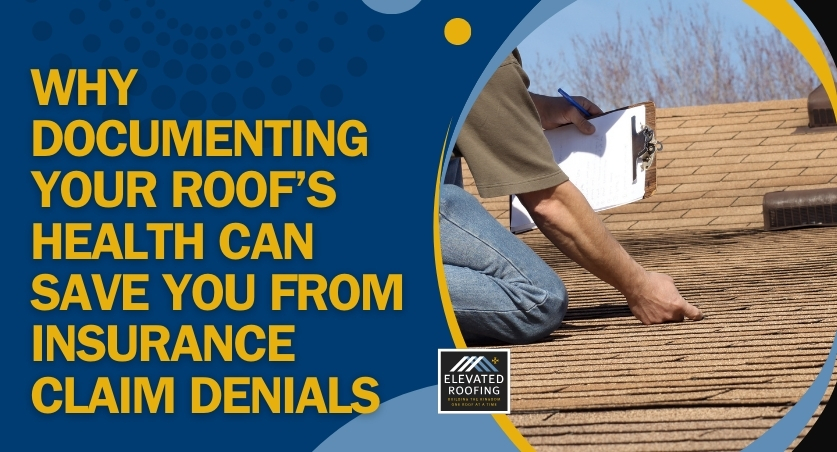How Will a Roof Last in Texas?
If you’ve wondered, “How long will a roof last in Texas?” you’re not alone. This question is a common concern for Texas homeowners, and rightfully so.
So, how long will a roof last, actually?
You might know that no roof will last forever and that the industry standard for an asphalt roof is 20 years. Someone might have told you that it depends on the materials or brand of shingles you use. You may even get your question answered by another question: How experienced is your roofing company?
To answer the question, “How long will a roof last in Texas?” this guide will outline the factors that impact a roof’s lifespan, how to maximize it, and warranties you may consider for your roof. The truth is, there’s no single answer — it really depends.
Factors Affecting Roof Lifespan in Texas
No one can tell you how long your roof will last. Materials, climate, and even your roofing contractor’s expertise can significantly impact its lifespan.
How Workmanship and Materials Affect Your Roof’s Lifespan
It’s true that the quality of workmanship and materials will make a huge impact on your roof’s lifespan. If you hire a storm chaser, for example, your roof might not even be completed properly, let alone last any significant length of time. An inexperienced roofing contractor can make costly mistakes that lead to leaks and failure of the system. You’d be better off with an experienced roofer using average materials correctly than an unskilled roofer using the very best materials improperly.
Thankfully for our clients, we use high-quality materials, and our team of roofers consistently demonstrates expert workmanship. That’s part of the reason we are able to offer an elite warranty reserved for only the top roofers in the nation. And we do this while staying competitive in pricing, too.
Climate and Location
Your roof may be one strong storm or extreme weather event away from the end of its life. So, the answer to, “How long does a roof last in Texas?” varies a lot on where you live in Texas.
- Storm-prone Areas: Frequent hail or strong winds can damage or curl your roof shingles, shortening its lifespan.
- Hot, Sunny Regions: Prolonged exposure to UV rays wears down shingles, causing them to crack and weaken faster.
- Damp, humid areas with extra shade: These areas are prone to moss growing on roofs and moss, when left top grow will ruin shingled roofs by lifting shingles one-by-one — leading to their eventual early decay.
No matter where you live in Texas, extreme weather events like hurricanes or hailstorms can shave years off your roof’s life in a matter of moments.
Serious weather events can decimate even the strongest roofs, installed perfectly by an experienced roofing contractor, using the very best materials.
How Long Does a Shingle Roof Last and Other Roofing Materials?
If you work with an experienced roofer, they will tell you the pros and cons of different roofing materials. The type of roofing material you choose significantly affects how long your roof will last. However, not all materials are created equal.
- Asphalt Shingles: If you’re wondering “how long does an asphalt shingle last?” the answer is they typically last 15–25 years, but they are susceptible to storm damage.
- Metal Roofs: Metal roofs are durable and can last 40–70 years, making them a great long-term investment. But if you live in a hail prone area, you should invest in thicker, more expensive metal roofing to reduce the chances of hail dents. In our area, hail is a serious problem and while metal holds up well from a performance aspect, you may not like the look of a dented metal roof after a hailstorm.
- Tile Roofs: Clay or concrete tiles can last more than 50 years with proper maintenance but may not perform well in violent windstorms without reinforcement.
- Wood Shingles: While visually appealing, they generally last 20–30 years but require maintenance. They may not be ideal for Texas’s extreme heat.
- Fiberglass Shingles: With proper care, fiberglass shingles can last between 30 and 50 years. That’s because they aren’t simply made of fiberglass—that’s just the base. They are fiberglass made into a cloth-like mat, topped with asphalt, topped with ceramic granules.
- Slate roofs: These roofs have an astounding lifespan. They can last between 75 and 200 years depending on the density of the slate tiles that are used.
- Rubber roofs: When most people ask about rubber roofs, they are talking about the commercial rubber roofs that are completely seamless. With proper maintenance, they can last as long as 50 years in mild climates.
Living in Texas means your roof must withstand the brutal summer sun and seasonal hailstorms. It’s important to make sure your roof has its best shot against hazardous weather. We recommend investing in durable materials like GAF asphalt shingles. They have a class A fire rating and provide wind resistance up to 130 mph.
Remember that even with the very best shingles, one weather event can destroy your roof. So, what you should be asking is how you can protect your investment.
How to Maximize Your Roof’s Longevity
A roof might not last forever, but there are plenty of steps homeowners can take to extend its lifespan. Most of our customers want assurance that this major purchase they are considering is worthwhile and valuable for the future.
Document the Health of Your Roof – Free Yearly Roof Inspections

Documenting the health of your roof can mean the difference between your insurance company covering the cost of a new roof or denying your claim after a strong storm or disaster. You can’t undeniably prove that your roof was in good health before a storm blew through without regular roof inspections. We tell our clients to schedule an inspection at least once a year in the spring or fall and after any severe weather event.
Rather than asking how long does a roof last in Texas, you might consider asking where you can get a quality free roof inspection in Texas. The documentation of the health of your roof can mean the difference between your insurance company covering the cost of a new roof or denying your claim after a strong storm or disaster.
Proper Maintenance
Routine maintenance is another important aspect of extending your roof’s life:
- Clearing debris and leaves from your roof and gutters to avoid water accumulation.
- Trimming overhanging tree branches that could damage your roof during a storm or rub against the shingles, causing premature wear.
- Fixing any leaks or damage as soon as possible. Ignoring minor issues can lead to more significant problems down the road.
Choose a Good Homeowners Insurance
Not all insurance policies are the same. If you are worried about how you would pay for a new roof if a windstorm were to blow through your neighborhood, check your homeowner’s insurance policy. What are the “perils” that are covered by your policy. Do you need more coverage or a different type of coverage?
- Actual Cash Value (ACV): This type of insurance coverage means that if your claim is approved, your insurance company will pay you for the value of the roof in its state just before the event triggering your claim.
The insurance adjuster will determine the expected cost to replace the roof and subtract amounts based on depreciation and other factors. So, if you have an old roof and it is wrecked in a storm, this type of policy will not cover the cost of your roof replacement.
- Replacement Cost Value (RCV): This type of insurance coverage means that if your claim is approved, your insurance company will cover the cost of replacing your roof with a new roof at current pricing.
Regardless of your policy type, remember that the Texas Department of Insurance advises having a roofing contractor present if your roof suffers damage. Our roofing contractors can be there with you when the insurance adjustor inspects your roof for your claim. We work with insurance companies every day.
We will ensure your insurance company does not overlook your claim. If we are under contract with you and have your permission, we can speak with your insurance company on your behalf.
Upgrade Your Roof Materials
If you’re considering a new roof, choose materials designed for Texas’s climate and weather patterns. Investing in high-quality materials can help you avoid frequent repairs or replacements due to low-quality roof materials, saving you money in the long run. For example, consider upgrading to impact-resistant shingles in areas prone to hailstorms, which can help prevent costly damages.
We’ll Answer Your Questions About How Long a Roof Lasts in Texas
If you’re still wondering how long a roof lasts in Texas, Elevated Roofing can assess your current roof and provide you an estimate of its remaining lifespan. We can also suggest roofing materials that can help increase the lifespan of your roof.
Elevated Roofing provides superior warranties, free inspections, quality materials, and support during insurance claims. Call Elevated Roofing today at 469-871-6475 or schedule a free inspection.





Comments are closed